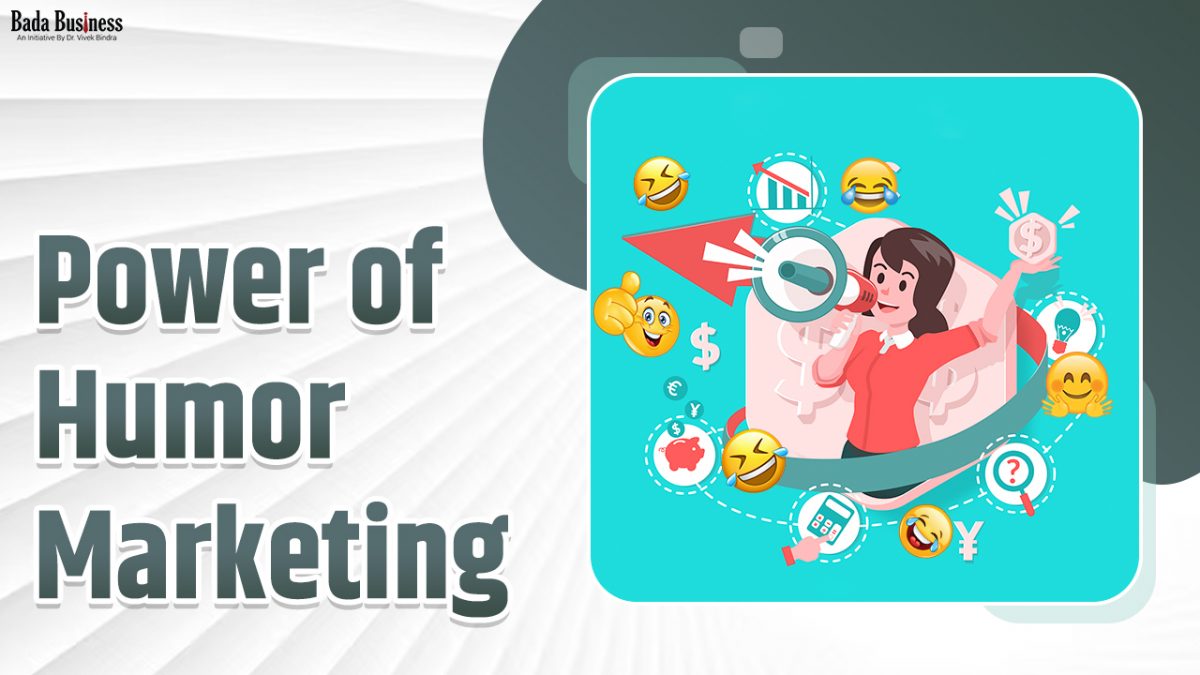Humor in marketing refers to the use of comedic elements, such as funny content, witty messaging, or amusing situations, to engage and entertain an audience to promote a product, service, or brand. It involves incorporating jokes, irony, sarcasm, wordplay, or lighthearted storytelling into marketing materials to make the content more memorable, relatable, and shareable.
Humor in marketing can take various forms:
- Ads and Commercials:
Many brands create funny advertisements and commercials to capture attention, create positive associations, and encourage sharing on social media platforms.
- Social Media Content:
Brands often use humor in their social media posts, memes, and videos to connect with their audience and spark engagement.
- Email Marketing:
Humorous subject lines or content in email marketing campaigns can increase open rates and engagement with the content.
- Content Marketing:
Blog posts, articles, and videos that incorporate humor can make educational or informative content more engaging and entertaining.
- Product Packaging:
Humorous messages or designs on product packaging can create a positive impression and encourage brand loyalty.
- Event Marketing:
Humor can be integrated into presentations, speeches, or promotional events to keep audiences entertained and attentive.
- Storytelling:
Incorporating humor into brand stories can make them more relatable and memorable.
- Branding:
Brands that adopt a humorous tone in their overall brand identity can create a distinct personality that resonates with their target audience.
Benefits of Humor in Marketing Strategy
Humor can be a powerful tool in marketing strategy, offering a range of benefits for businesses when used effectively. Here are some ways humor can positively impact your marketing efforts and contribute to business success:
- Captures Attention:
Humorous content stands out in a sea of marketing messages. People are naturally drawn to humor, and using it in your marketing can help grab and hold their attention.
- Memorability:
People are more likely to remember funny advertisements or campaigns. Humor creates a memorable experience, making your brand more likely to stick in the minds of your audience.
- Emotional Connection:
Humor can create an emotional connection with your audience. When people associate positive emotions with your brand, they are more likely to develop a sense of loyalty and affinity.
- Relatability:
Humor often plays on shared experiences, making your content more relatable. This can help your audience feel like your brand understands them and their challenges.
- Viral Potential:
Humorous content is highly shareable. People love sharing things that make them laugh, leading to increased visibility and potential for viral spread across social media platforms.
- Reduced Resistance to Messages:
Humor can help break down barriers and resistance that might exist when delivering serious messages or promoting products. People are more receptive to information when it’s presented entertainingly.
- Brand Personality:
Incorporating humor can define and reinforce your brand’s personality. It can show that your brand is approachable, creative, and willing to have a little fun.
- Differentiation:
Using humor can set you apart from your competitors by showcasing a unique and engaging aspect of your brand.
- Engagement:
Humorous content tends to generate higher engagement rates. This could include likes, comments, shares, and overall interaction with your brand’s content.
- Positive Associations:
When people associate positive emotions with your brand, they are more likely to have positive perceptions of your products or services.
- Overcoming Resistance:
In certain industries where there might be resistance or reluctance (e.g., health or insurance), humor can ease tension and make customers more receptive to your message.
However, it’s important to note that humor can also backfire if not executed properly. What one person finds funny, another might find offensive.

Here are a few considerations when using humor in marketing:
- Know Your Audience:
Understand your target audience’s preferences, values, and cultural sensitivities. Tailor your humor to resonate with them.
- Stay Consistent:
Make sure your humorous content aligns with your overall brand image and message.
- Avoid Offensiveness:
Humor that crosses boundaries or is offensive can lead to backlash and damage your brand’s reputation.
- Test and Iterate:
Before launching a full-scale campaign, test your humorous content with a smaller group to gauge reactions and make adjustments if necessary.
Examples:
Here are a few examples of brands that have effectively used humor in their marketing strategies:
- Old Spice – “The Man Your Man Could Smell Like”: Old Spice is known for its humorous and over-the-top commercials that play on traditional masculinity. The “Old Spice Guy” campaign features absurd scenarios and witty dialogue, capturing attention and creating a memorable brand image.
- Dollar Shave Club – “Our Blades Are F*ing Great”**: Dollar Shave Club introduced itself to the world with a humorous and irreverent video that poked fun at the complexities and high costs of other razor brands. The video’s humor and straightforward message helped the company go viral and gain a massive following.
- Geico – “15 Minutes Could Save You 15% or More on Car Insurance”: Geico’s consistent use of humor, particularly in their “15 Minutes” campaign, has helped them stand out in the insurance industry. They employ a variety of comedic scenarios, often using unexpected characters and humorously exaggerated situations.
- Airbnb – “Is Mankind?”: Airbnb used humor to address diversity and acceptance in their “Is Mankind?” commercial. The ad humorously portrays various characters and situations, highlighting the idea that regardless of our differences, we all belong.
- Oreo – “Dunk in the Dark”: During the 2013 Super Bowl, Oreo quickly responded to a blackout with a simple tweet: “Power out? No problem. You can still dunk in the dark.” This quick and witty response capitalized on a real-time event and generated a lot of buzz.
Here’s an example of how humor can go wrong in a marketing campaign:
Pepsi – “Pepsi x Kendall Jenner”: In 2017, Pepsi released an ad featuring model Kendall Jenner participating in a protest and seemingly defusing tension by handing a police officer a can of Pepsi. The ad was widely criticized for trivializing real social and political issues and for using activism as a marketing tool. Many viewers found the ad tone-deaf and insensitive to the seriousness of the problems it touched upon. The controversy resulted in a backlash, with accusations of exploitation and insensitivity. The ad was eventually pulled and publicly criticized, showcasing how humor and attempts at social relevance can backfire if not executed thoughtfully and responsibly.
This example illustrates the importance of understanding the context, cultural sensitivities, and the potential implications of using humor in marketing campaigns. It’s crucial to avoid trivializing serious issues or causing offense to your audience, as this can lead to negative perceptions and damage to your brand’s reputation.
When using humor in marketing, it’s essential to consider factors like the target audience’s preferences, cultural sensitivities, and the brand’s overall message. Successful humor in marketing is not just about being funny for the sake of it; it’s about effectively connecting with the audience, creating positive associations, and maintaining authenticity.
However, humor in marketing can also be risky. What one person finds funny, another might find offensive. Therefore, brands must strike a balance between being humorous and being respectful, and they should always be prepared to handle any potential backlash.






